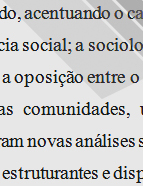

................................
With regard to colonial administration, reference is made to the captaincies of Brazil, the House of Ceuta and general entries on bandeirantes, engenho and donatarias. The remaining colonies and the complex network of governors-general and local governors, including the viceroyalty, are absent. Ecclesiastical institutions are reasonably well represented with entries on the Patriarchate, dean, canon, collegiate, bishopric, archbishopric, chapter, abbeys, constitutions, Bull of the Crusade and respective junta, parish, diocese, Tribunal of the Holy Office, convent and commendations. These are associated with the Military, Religious and Honorary Orders such as those of Christ, Calatrava, Santiago, Cister, Benedictines, Carthusians, Cluny and the Order of Hospitallers. As for political associations, we find entries for the parties born of liberalism (Republican, Unionist, Progressive, Regenerator, Socialist) and a reference to Freemasonry. Brief attention is given t , the charitable institutions, with entries for misericórdias, gafarias and Casa Pia. The same applies to educational institutions, where we find general entries on universities, minor studies and public education, with particular mention of the University of Évora, the Colégio dos Nobres and the Polytechnic School.
Among our collaborators, we have five academics from the north (3 from FLUP, 1 from FMUP and 1 from FEUP), eleven academics from the south (6 from the future FCSHUL and 5 from FLUL), five from the centre (FLUC), nine history teachers from secondary schools and colleges, seven history researchers, one academic from FDUL and two history methodologists. In other words, in a group of 40 collaborators, we have only one law graduate, 18 non-university collaborators (45%) and only two who do not belong to the scientific field of history. The DHPJS is thus the first major collective work that does not include legal historians and combines university academics with researchers and teachers from secondary schools and/or colleges, making it a unique observatory in that it counterbalances the legal legacy of the past. Despite everything, we cannot say that the DHPJS has, in general, shown a significant change in the direction of production since the end of the 18th century. We can therefore say that, in general, institutional historiography has maintained the same heuristic and hermeneutic characteristics from the 19th century until the end of the Estado Novo.
This work is financed by national funds through FCT - Foundation for Science and Technology, I.P, in the scope of the projects UIDB/04311/2020 and UIDP/04311/2020.
